How have technological advancements impacted album covers, music promotion and visual identity design in the music industry?
 Ben Jackson
Ben Jackson
32. Appendices
Over the last 30 years the impact that technological advancements have had on album promotion has been very noticeable due to streaming and social media. The aim of this study is to assess the impact of these changes, focusing on the impact of scale on design of the record sleeves, the impact on album promotion and the public - musician relationship via a survey, as well as assessing the views of some notable industry figures. The study also looks to the future by discussing features such as VR and AR and the impact they are having on musicians such as Bjork and Radiohead. Three practitioners where interviewed for this study, who have all seen the impact of technology over the course of their careers. Lastly this study is informed by numerous design and music journals and books.
Introduction
Technology is present in all aspects of our lives and has reshaped the 20th and 21st century in many ways from everyday social life to big budget blockbusters, and most importantly the music industry. This essay explores how technological advancements impacted album covers, music promotion and visual identity design in the music industry.
Album artwork is an art form in its own right, passed on from designer to designer over generations, acting as a window into the past, showcasing the pop culture the 20th century had to offer (De Ville, 2003, p.1). The album artwork canvas has greatly inspired many designers with the lack of restrictions on the format (Shaughnessy, 1999, p.5). The purpose of these images was to communicate the information of who the musician was, but also the genre and style (De Ville, 2003, p.30). In many ways this has changed. This iconic square format has crafted countless iconic images, now some are just recognisable as T-shirt designs rather than the album covers they originated as (Borland, 2021)
We now live in a time where music is massively consumed via streaming platforms, such as Spotify, which boasts 422 million users a month and 182 million that subscribe to premium (Iqbal, 2022). The scale and impact of these streaming platforms is displayed by the 2 billion USD Spotify made in the first quarter of 2020 (Sánchez-Moreno, Yong Zheng & Moreno-García, 2020). The 21.8 million vinyl units shifted in America is considerably smaller than streaming, which takes up a full 84% of the music market (Aswad, 2022)
This essay will explore how technological advancements have over the past 30 years impacted album covers, music promotion and visual identity design in the music industry through interviews with practitioners such as Jeremy Cunningham (Appendix 2), member and designer for the Levellers, Steve Lippert (Appendix 3) designer for his own record label and Adam Blake (Appendix 1), designer for The Made Shop. The research was mainly focused on the impact of streaming services such as Spotify and Apple Music on their personal practice
These topics are explored over three chapters. Firstly, chapter one explores how music design has changed over the last 30 years and how this impacted practitioners approaches to design and the elements that are involved. Secondly, chapter two investigates how consumer attitudes towards album promotion has changed. This looked into how consumers view the relationship between the music itself and the musicians behind it. Then lastly, chapter three looks to the future of the design industry in regards to music promotion, focusing on practitioners who have pioneered change and pushed the medium forward. This focuses on newer technologies such as Augmented Reality (AR) and Virtual Reality (VR).
This essay will focus at all these separate aspects of the subject. While looking at several sources, the essay mainly focuses on artwork from the rock/ alternative genres of music. Focusing on the work of bands such as, Radiohead, Bon Iver, Arcade Fire, The Levellers, Bjork and HAIM. While this is only a small section of the design industry, this essay strives to be a balanced portrayal of the impact that technology is having
Background:
In the dawn of music promotion the information of what the record contained was done via a strategically placed circle hole in the paper record sleeve enabling the record label to the readable (De Ville, 2003, p.18). In was in the 50s when the record sleeve became the place for visual expressions it is known for today (Shaughnessy, 1999, p.5). The traditional promotion was done through methods external to the record itself such as billboards and other physical marketing, but never focused on making each record unique (De Ville, 2003, p.19). Now in the last 30 years with the constant technological evolutions the security and position of album artwork is constantly in question (Shaughnessy, 1999, p.6). For some the arrival of the compact disc ushered in the death of LP artwork, but in the years following, many iconic artworks have been produced and influenced by this new format (De Ville, 2003, p.204-205). Even legendary designers from the 70s such as Peter Saville carried on into the new era of CDs (Shaughnessy, 1999, p.16). These practitioners who embraced the potential of new technological developments echo the designers in the 1950s who embraced the sleeve format, they help the industry evolve and survive (Shaughnessy, 1999, p.22).
Chapter 1: How has music promotion changed in the last 30 years?
Out of the many impacts that technological advancements have had on album design, the most clear is the change in the artwork size (Le, 2020). While the image is still relevant, the artwork display space has become considerably smaller. This means, certain imagery such as artist photography or portraiture has become more common as it best fits the smaller scale (Ore, 2013). In an interview for this essay, Jeremy Cunningham (2022) of The Levellers, spoke about how scale has impacted his practice. “Basically I try to keep Levs stuff very simple + dramatic. So with streaming thumbnails one has to reduce everything to its most basic + forthright - the cover to Levs ‘peace’ album is a good example (figure 1). The design is very simple (a Phoenix) with bright flattish colours, but then it’s a painting - so that on big formats like vinyl 12 it’s interesting ‘cos one can look at all the brush strokes + paint drips etc. Then on streaming one just gets the basic shape + it still works.” This shows for some the conceptual level of the design process is the same as always, but it is always a bonus when this design also is communicated in new ways on that smaller scale (Blake, 2022). However, it can also still be argued that the imagery is not as impactful when on the smaller canvas of a digital device (Graff, 2018).
One of the impacts of the change in LP size, is typography (Blake, 2022). When the album cover was the main focus of the campaign it needed to communicate the artist brand and identity in one main image (De Ville, 2003, p.10). The additional elements such as imagery and designed typography were introduced to make the communication between artist and consumer stronger. These elements can have both a positive or negative effect in the modern age (Le, 2020). Typography is still one of the strongest ways of maintaining continuity over a music promotion campaign (Cochran, 2019). However due to the fact artist and album information is now written

below the cover on streaming websites, the need for typography on the sleeve has lessened (Blake, 2022). Jeremy Aynsley, professor of history of design stated that first wave punk is one of the last ever examples of a non computer influenced design in the music industry, leading to a return to classic styles and themes (Medel, 2014). This punk era saw a great rise in iconic album and band logos such as the ionic Sex Pistols logo (figure 2). The shift to mainly crafting iconic images, over iconic typefaces and logos does lead some to question how this era will be remembered (Vanderbilt, 2005). On the other hand, in the 70s, many of the most iconic covers don’t include typography and they still have a strong impact (Blake, 2022)
The size reduction of album artwork has also seen the reduction in size of role that the album sleeve has in the promotional campaign in general. Now album art works as part one of a massive system of promotion to get a consumer invested in the product and artistic identity (Le, 2020). In this sense record sleeves now work in the way a logo would, representing that era of a band or musicians discography (Cook, 2013). This is becoming less and less the case as the whole campaign surrounding the album sleeve grows in importance, now the sleeve acts as a proof of concept for the whole campaign to follow. Greg Burke Creative director for Atlantic Records interviewed by Splinter News (McKinney, 2015) said, “What makes designing an album cover different is the cohesive campaign that you put together … a campaign and a branding identity for that cycle.” This change has lead for an increased focus on more eye catching elements to complement the main album artwork to better compete on Instagram and social media timelines (Skelton, 2017). Each element of the campaign has to work strongly on its own because there is no guarantee the album cover will be the entry point for a consumer like there was in the days of CD and vinyl (McKinney, 2015). Even the early days of CD saw the main cover become part of a greater collection of imagery from a lyric booklet (De Ville, 2003, pg.10). However it can still be argued no matter if the album sleeve is part of something greater, its design is the best chance to fully display the musician’s identity within a single image (Skelton, 2017). This is the case for both physical and digital encounters with the artwork

New features that complement the album artwork come in many different formats, one of the earliest and most noticeable mediums of additional promotion is the music video. The key example 1966s – Subterranean Homesick Blues by Bob Dylan, (figure 3) this is often cited as the first ever music video, but it was 1974s Bohemian Rhapsody by Queen that changed the scene. From this point onwards the music video could thrive as the artistic medium it is (Siqueira, 2018). In the 1980s shows and channels such as MTV were influential in the promotion of the music video, and this defined the music industry for decades. This new medium of promoting music kept the industry alive for a generation of teenagers and young adults (Cook, 2013). The music industry did a lot for experimenting and pushing forward digital mediums, in the music video for the 2003s ‘The Science of Selling Yourself Short’ (figure 4) both live action with animation and 3-D environments are used to achieve the final product (Woolman, 2004: p.138). As time has moved on the pressure to have all elements of the campaign connect have increased, but this has forced the industry to develop and evolve (Lippert, 2022). Designer for Bon Iver album ’22, a million’, (figure 5) Eric Timothy Carlson said, when interviewed by Walker Art Centre (Byrne 2016), that the challenge with lyric videos (figure 6) is “figuring out how to do it good/weird/right,” and “how to acknowledge the format, and how to expand the album art into this realm”. This suggests that amongst the different outcomes maintaining that unity can prove difficult no matter how vital. Carlson also acknowledged that there is a lot of fan made content in the motion realm and it is important to incorporate it into the identity and honour it.




In an age of low attention spans social media and streaming has added a new dynamic to album promotion (Skelton, 2017). This is particularly noticeable in the Spotify feature, Canvas (figure 7). This Spotify feature plays an 8 second looping clip over a song when it is playing. This is often used to repurpose a music video or sleeve design (Blake, 2022). Spotify's statement on the feature, referenced by Design Week (Wong, 2020), says Canvas has the potential to become the “core visual an artist makes to create a world around a track”. Spotify went on to say that Canvas could re-inspire peoples love of an older song in the back catalogue of their favourite artist. This puts a lot of power into the musicians hands on how they brand themselves in a professional way, as canvas is said to increase audience shares by 145% (Robley, 2022). Many different art styles such as animation, collage and live action can be used with this feature, some musicians such as Billie Eilish used fan made artwork with the feature (Sparrow, 2021). These type of additional features are often not judged on quality but on how well it represents the artist’s brand (Klanten. Hellige, 2007 pg.166). Now all of these elements are coming together and they feel incomplete without each other (Medel, 2014). Connecting to the audience in new ways is becoming increasingly the key focus. Jonathan Barnbrooks cover for David Bowie’s 2013 album ‘The Next Day’ a parody of the 1977 Bowie album cover ‘Heroes’ (figure 8) inspired people to recreate this imagery online making an internet meme (figure 9) (Robson, 2016).
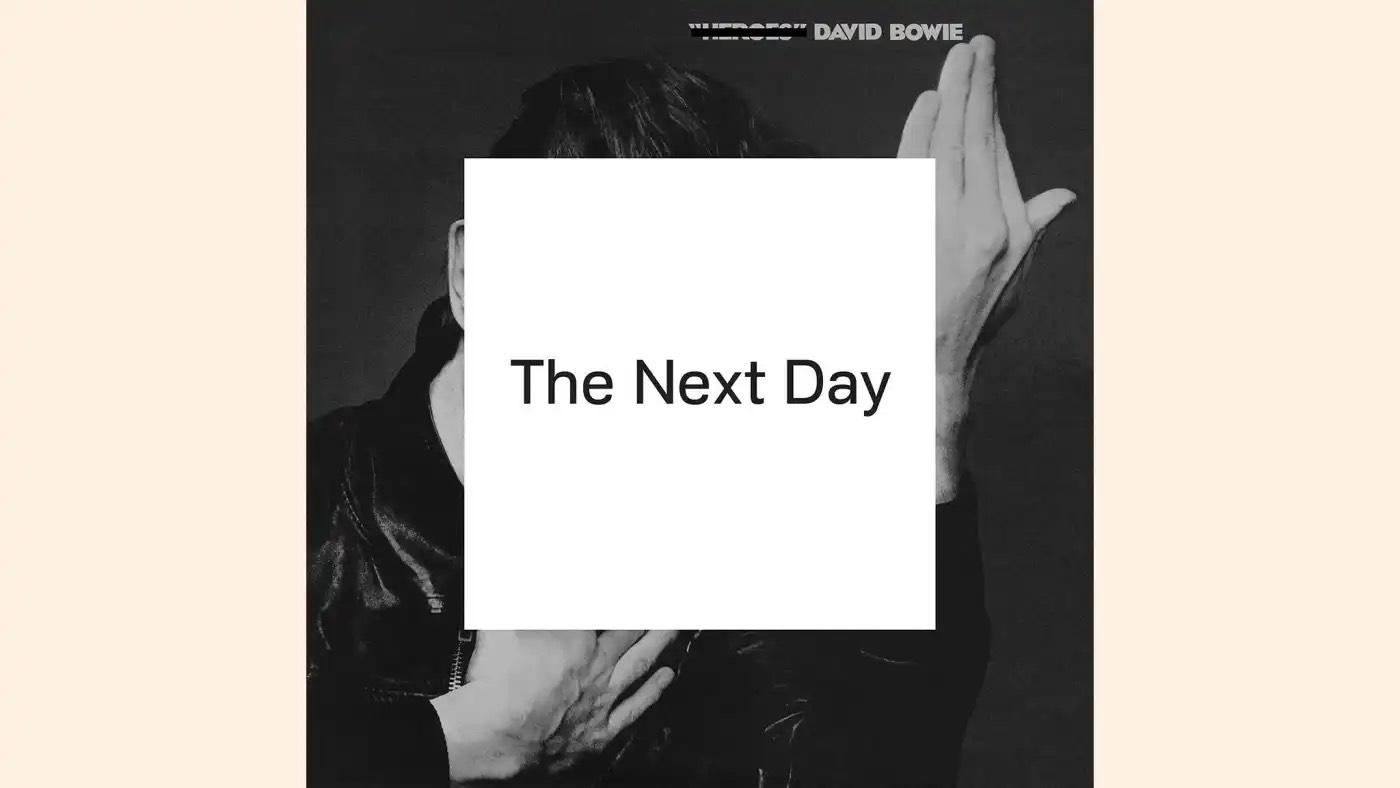


While the current state of the music industry lends itself to the ultra connectivity of the digital realm, physical products are still created (Thomas, 2013). The vinyl revival that started in 2006 has given loyal fanbases new ways of expressing their devotion to the artist (Medel, 2014). In this sense the album artwork has shifted from the sole product to a form of merchandise (Le, 2020). This attitude is felt among companies, much more than the musicians and designers (Creative Review, 2020). Working like a brand or logo, the album artwork acts as the first introduction to the personality of the music; just like in the 60s and 70s the music industry are adding additional features to the simple vinyl layout (Thomas, 2013). This came in multiple forms such as gatefolds, posters, lyric books (figure 10). Adding these features helps increase customer interest (Cook, 2013). In creating this artwork the 20th century saw the music industry create the modern folk art that resonated for a whole generation (De Ville, 2003, p.8). If this has carried on to the digital era is a question not yet answered, however the vinyl revival indicates that the 12 inch canvas still holds a staying power.
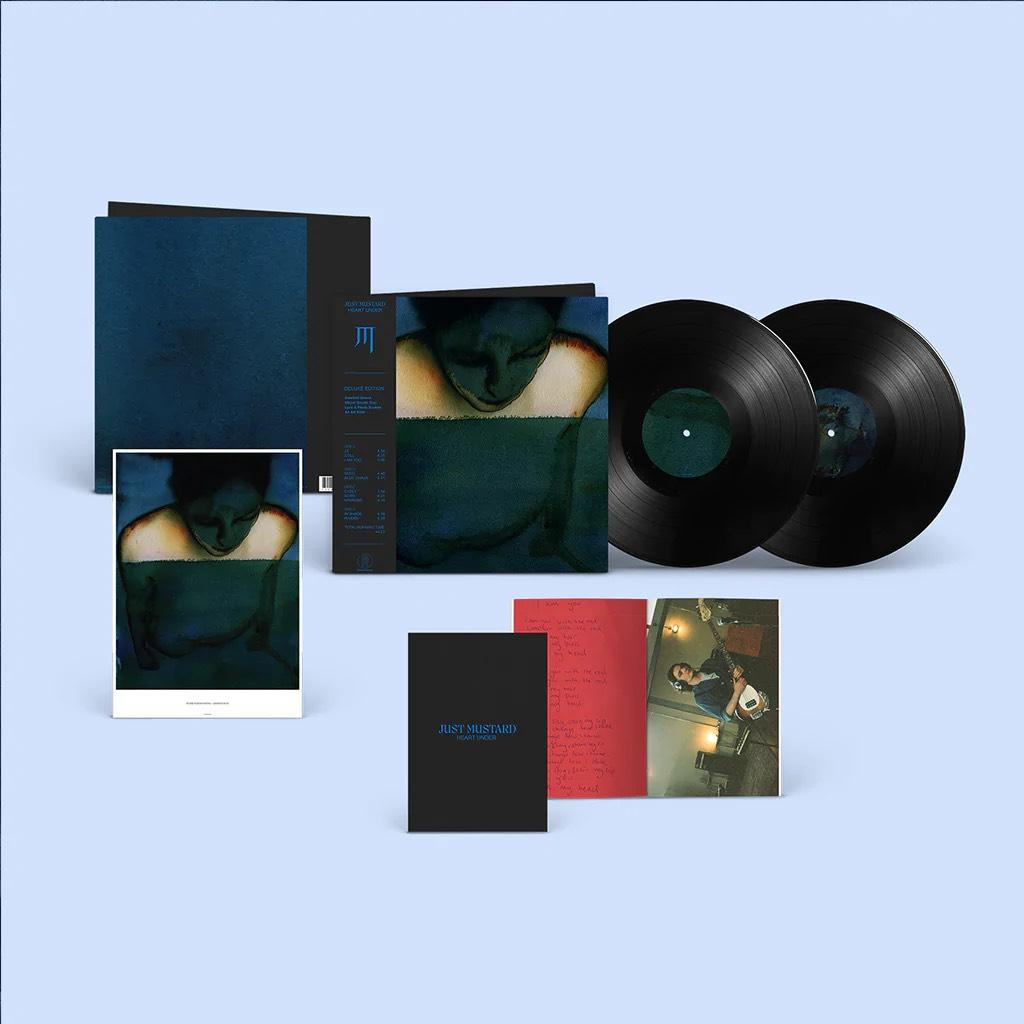
Chapter 2: How have consumers attitudes and behaviours towards music promotion changed?
To further understand the impact of technology on album promotion, a survey was conducted (Appendix 4). The goal of this survey was to focus on the impact that social media and new technology has on people’s listening habits. The age range for this survey was focused more on Gen X-Z. This is because they cover the last 30 years that the essay is focused on. The questions considered streaming habits, purchasing habits and social media habits. These questions create an idea around a persons relationship to album artwork and how it impacts them through these mediums. The majority of the answers for this come from the United Kingdom, this connected well with the UK based designer interviews that where conducted. The answers to the survey were all collected online. This was achieved through the survey site Google Forms.
The main method of consuming music has drastically changed within the last 30 years, as of 2017 now streaming is the dominant force (Milton, 2017). This has completely changed the method of accessing music and the relationship consumers have with it (Besseny, 2019). In a survey conducted for this essay 88% of 112 people said they used streaming as their preferred music listening method (see appendix 4). Some would argue this shift to streaming means now people will just listen their favourite songs from an album instead of listening to the whole record, strengthening people’s belief in the death of the album (Karakuyu, 2016). The playlist culture of Spotify, using algorithmically suggested playlists such as “Fresh Finds”, “Discover Weekly” (figure 11) has increased focus on a singular song over an album (Besseny, 2019). The streaming playlist



culture has become even more influential now it is combined with social media sites such as Instagram and Facebook allowing musicians to promote their own playlists that are then shared by others (Cole, 2019). On the Spotify canvas webpage it now advertises that Instagram stories are a new way of sharing Spotify Canvas loops (figure 12) furthering the outreach these images have (Spotify, 2022). The impact this has is supported by a survey conducted for this study, that found 43% of people’s social media friends sometimes influence their music listening and 21.1% said they do (figure 13)
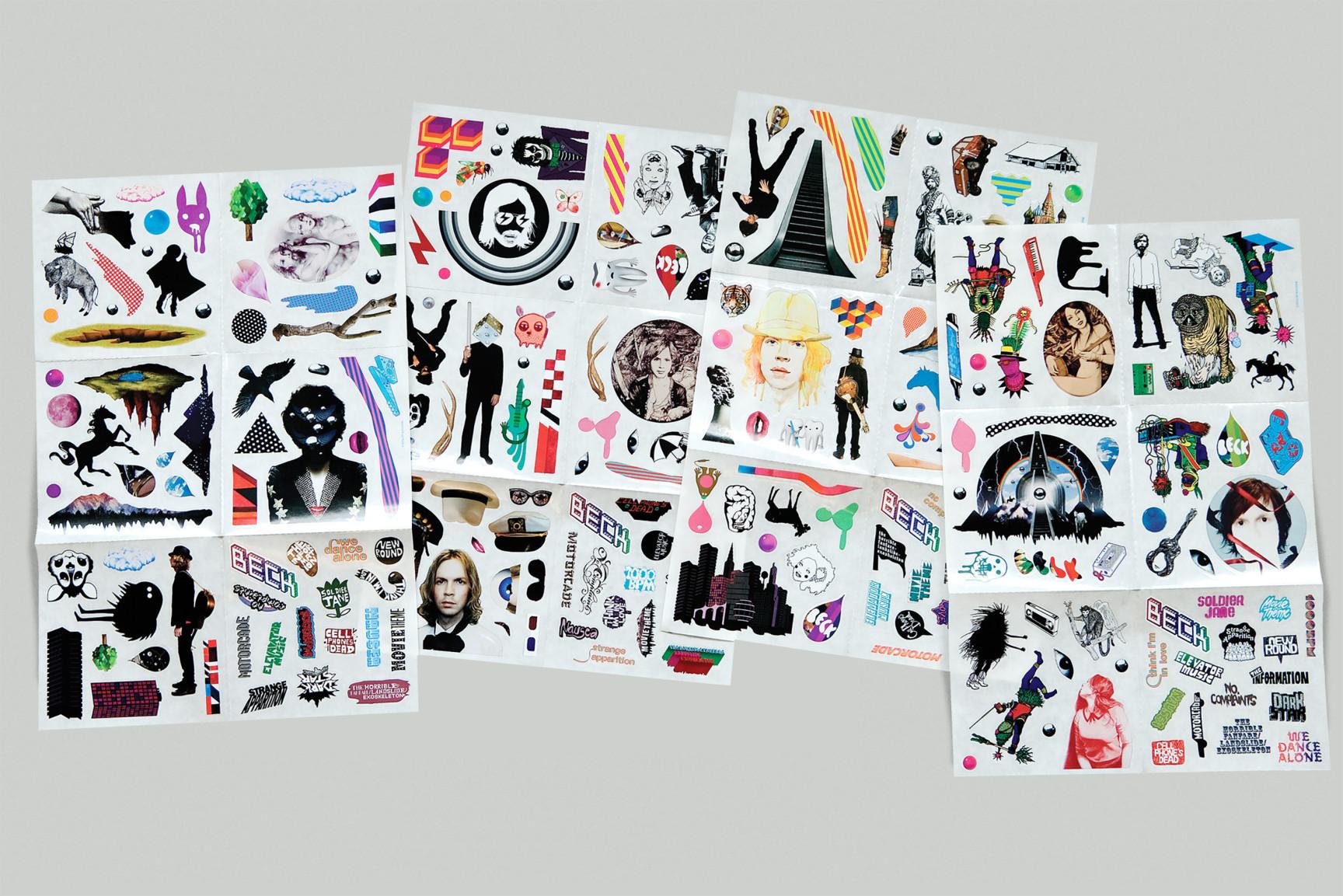
Musicians on social media can engage with their fans from both promotional and personable standpoints. From the survey conducted for this essay 54.8% of people said they followed their favourite musical artist on social media, with 3 people saying the musician did not have social media (figure 14). This suggests that there is a large connection made on these platforms. When asked if artists are now more aware of the social media and streaming potentials, Steve Lippert (2022) said, “Yes I really think so. Older artists are incredibly aware. I have friends that still make records for the pure enjoyment of it. Many have come to realise that they cannot become rich from it and are just enjoying being in the moment now.” This suggests that artists enjoy reaching out and going to that next level of self promotion amongst their fans. Even larger artists such as Beck create engaging and fun features to go with the album release. These features are highly customisable in the physical media realm by the use of stickers, (figure 15) Big Active creative director Gerard Saint revealed this was all overseen by Beck himself (Klanten. Hellige, 2007, pg.6-8). This suggests that the design holds a strong place in the mind of some musicians causing their personality to come forward. Another example of this is, Florence and the Machines latest album was inspired by lots of pre-Raphaelite artwork (figure 16). This became a key part of the social media campaign and album design, giving the album a unique personality (Williams, 2022)

The medium used to communicate with the consumer impacts the relationship that is established between musical artist and listener. In a survey conducted for this essay when asked to rate their attention to album covers out of 10, the average answer was 5.3 (figure 17). Whilst there was no clear sway either way, the majority that rated their attention from 1-4 came from the Under 18 or the 18-24 categories (see appendix 4). From this you can infer that younger generations are less interested in album artwork. More interestingly when asked to rate their likelihood to watch a music video out of 10, the average was 4.5 (figure 18), one could infer that the album’s artwork still holds the dominant power in music promotion. The fact that both of these numbers are in the middle suggests that the combined strength of the two is what makes a strong modern campaign.
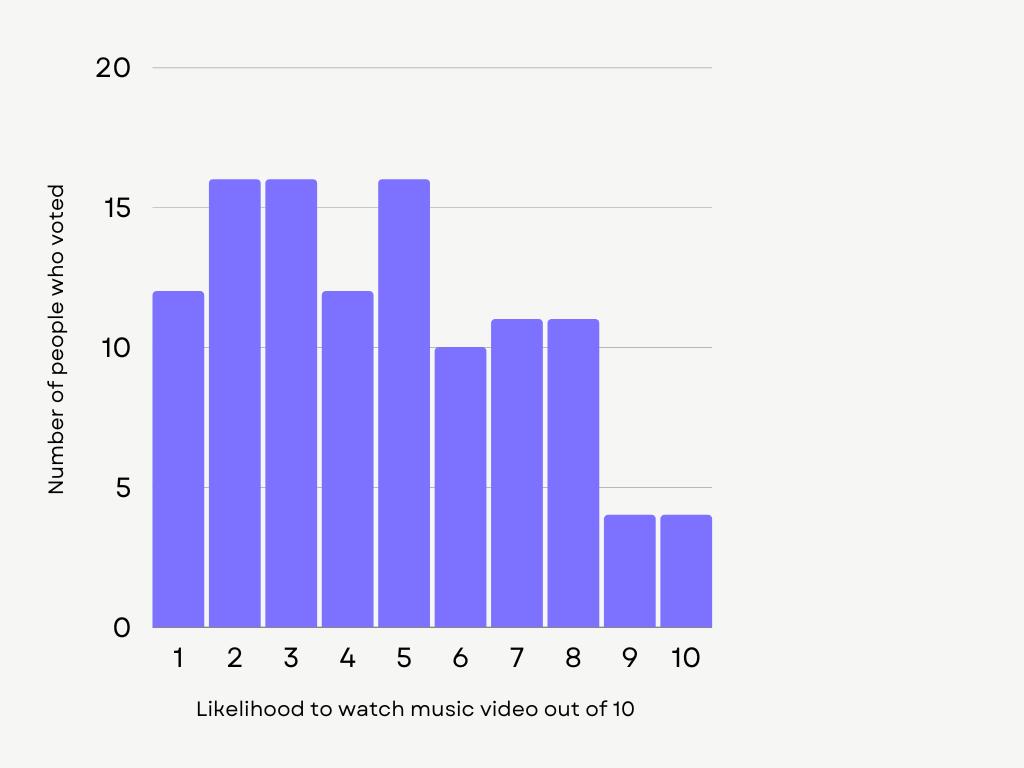


Further data from the survey displays the disparity between listening to the music and purchasing it, and what impact the album cover has. When asked to rate the influence album artwork has on their decision to listen to music the average answer was 3.9 (figure 19), this number saw an increase to 4.2 when asked to rate how much the album artwork influences them to purchase music (figure 20). While not a massive increase it does show that there is an impact made by artwork. These results further support the idea that the album artwork is just one single part of a greater consumer journey. Creative Director when interviewed for for the book Supersonic : visuals for music (Klanten. Hellige, 2007, pg.6-8) said “It’s very arrogant of designers to assume that their artwork is more important than the work they are packaging - at best the two work in synergy to create a complete experience”. The survey results support this and that the symbiotic relationship between consumer, designer and musician still exists, however it changes.
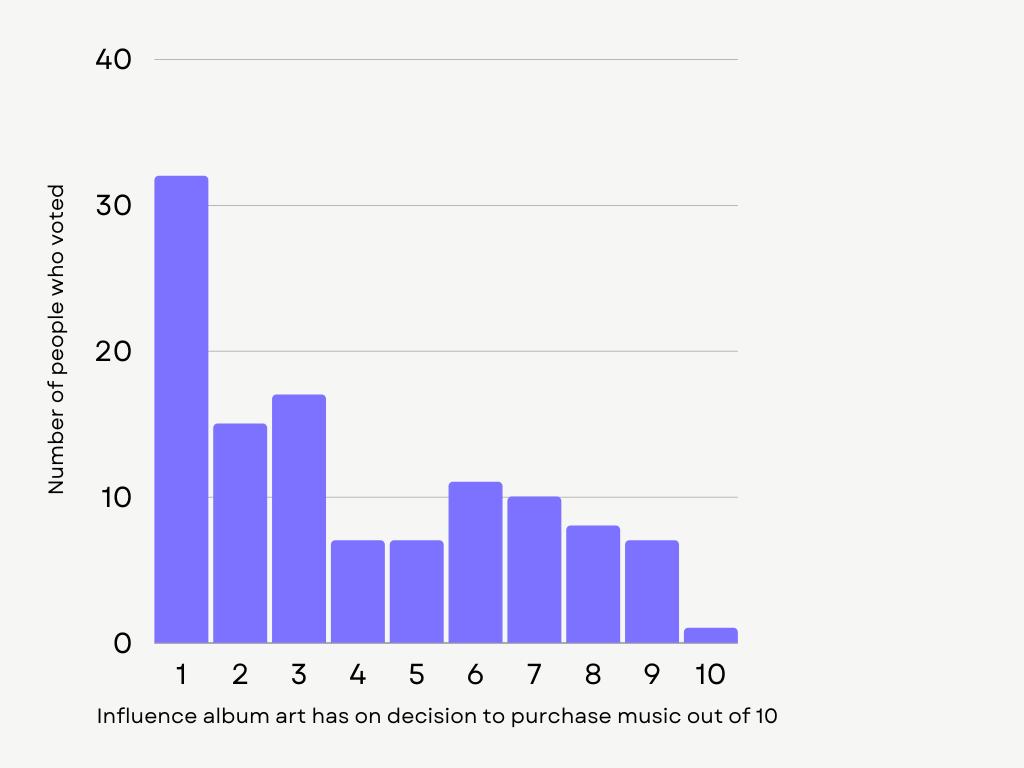
It can however, also be argued that the awareness musicians have of album promotion has not changed, only the medium used for promotion (Blake, 2022). In the past awareness was centred around the radio or in the record shop, now this has shifted to social media. Music releases now can be much more focused on self-released product, either from the musician paying for it themselves or using a website like Bandcamp (Lippert, 2022). This allows people to release content such as unreleased demos. While these things have been released in the past, the difference now is the power that the artists have to do it all by themselves and not the professional input. However this doesn’t really impact the process of professional designers (Blake, 22). In many ways designers work around these trends that are created to make it standout as something well thought out. This often leads designers to have a tendency to wilfully engage with new developments in technology (Cunningham, 22).

The way consumers view musicians in the context of an album has also changed in the modern digital era. Now the single song is sometimes all a person will listen to, (Karakuyu, 2016). American journalist Tom Vanderbilt (2005) writer for Design Observer said “Sure, there are little JPEGs on iTunes that depict album covers, but the proliferation of digitally acquired music and the rise of the "playlist culture" is a threat not only to the idea of an album as a coherent body of work but the album as a package.” Spotify now provide slides for artists to use to promote a playlist when they appear on it, this often directs people to single song not a full album (Bonifacic, 2020). This feature is also available for consumers to engage with and share their favourite songs. People hope that through new technology such as AR that people will be able to go back to engaging with an album experience and not being so active in the track selection process (Williams, 2018). However it can be argued, even when part of a playlist with several songs, the album artwork still creates an emotional connection with the consumer (Skelton, 2017). It also could be said that whatever image will become popular and iconic from the campaign is decided by the audience, not the designer (McKinney, 2015)
Throughout all of these changes within the music industry, the tangible nature of physical media has still not fully disappeared and has seen a recent revival. When Brandon Bogajewicz (2020) (co founder of Moon Vinyl) was interviewed by Design Week (Long, 2020), he shared his thought on the vinyl revival: stating that due to the Covid lockdown people had the time to engage more with these physical products. He elaborated that an attraction of vinyl is because the control you have over the music is reduced, defining the material experience. It can also be argued that the physical manifestation of music and the artwork makes it have more relevance than if it was just code on a computer (Shaughnessy, 2007). For this essay Steve Lippert (2022) said, “It really has gone back to the early 80s independent record days in many ways, when people would ask a friend to drive around handing over a pile of records to shops on a buy or return basis. Larger labels are often relying on repackaging... 10th Anniversary Version includes free set of postcards and colour vinyl editions aimed at fans who will collect every format available!” This suggests that the collectable culture is something that is keeping physical media engaging for new generations.
Chapter 3: What is the future of music promotion?
“I think there will always be a visual representation of the music so I don’t see that going anywhere” was the response Adam Blake (2022) gave when asked about the future of the music industry. He also mentioned, however, that the medium it is in may change drastically. Firstly, the size and scale of social media campaigns are being reduced/edited to fit with the new digital environment; this sees an age in which everyone is connected with everyone on social media, making promotion and being discovered easier (Bonifacic, 2020). When interviewed for the book Supersonic : visuals for music (Klanten. Hellige, 2007, pg.166-167), Rob O’Connor stated, Warner Bros set up an interactive album artwork department to try and reframe the album as a body of work. A lot of what people want from the future does seem to be a reinvention of the past, this is evident in the 2010 promotion for The Suburbs by Arcade Fire (figure 21). The goal of this campaign was to try and reflect the experience of having physical vinyl packaging but in the digital realm. This campaign contains hand written lyrics and a unique image for each song; this is reminiscent of the classic lyric books from original vinyl releases ( . Despite all of this, “good design is good design”, is still the predominant attitude of Jeremy Cunningham (2022)
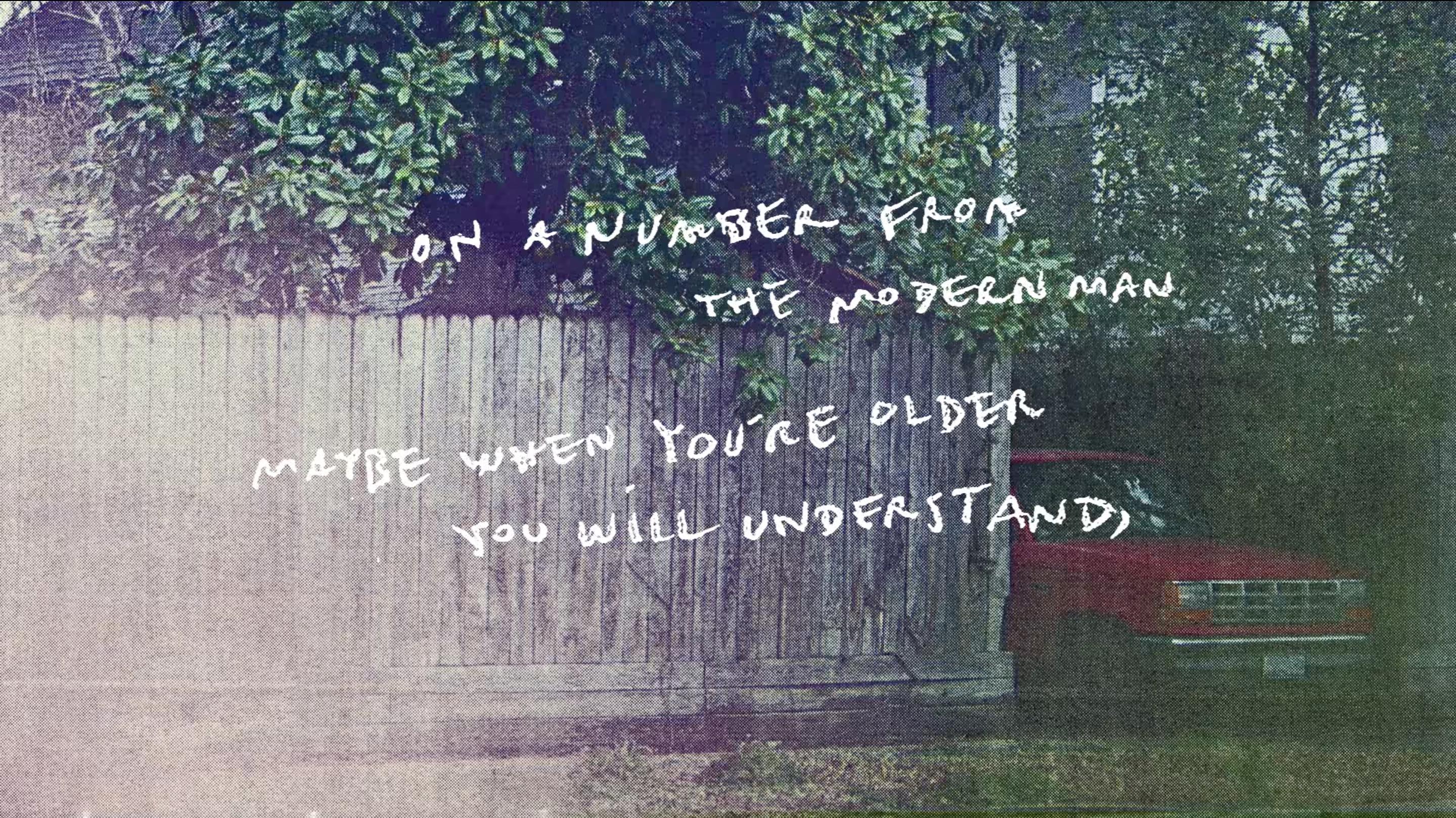
One of the ways that the music industry is heading into the future is through the use of both virtual reality and augmented reality. These features have been growing in prominence over the last few years. In the pandemic all live music had to stop. This allowed for a great increase in the amount of live concerts and broadcasts (Swarbrick, D. Seibt, B.
Youtube’s 360 feature is another immersive digital experience that is being used by the music industry (DeCesare, Wang, 2020). Both the VR and AR elements are being greatly supported by social media features; this is particularly the case for Instagram. In 2020 for HAIM’s third album a large part of the promotion used AR features for Instagram stories (figure 22), (Creative Review, 2020) This experience enabled Matt Nichols interviewed by Creative Review (Creative Review, 16
 Grinspun, N. Vuoskoski, J K. 2021)
Figure 21 Frame from Youtube upload of Modern Man Lyric Video (2020)
Figure 22 Frame from video displaying Instagram AR feature on HAIM album cover (2020)
Grinspun, N. Vuoskoski, J K. 2021)
Figure 21 Frame from Youtube upload of Modern Man Lyric Video (2020)
Figure 22 Frame from video displaying Instagram AR feature on HAIM album cover (2020)
2020) “to think of AR as a creative medium rather than just considering filters as another marketing asset”. This suggests that AR is growing in appreciation and people are taking it seriously and becoming much more engaged.
One artist known for her ability to push boundaries of both music and technology is Bjork, who has recently started experimenting with the opportunities available with VR (Figure 23). Like with many things, the music video industry will experiment and be at the forefront of using new methods and technology, this will then often make its way into filmmaking (Siqueira, 2018). This new form of advancing music is one that greatly encourages collaboration between designer and musician, as Bjork, interviewed by Creative Review (Williams, 2016), said “I probably make my music 80% on my own, but with the visuals it has always been more 50/50 collaborative.” This suggests that technology is causing a stronger relationship between creative partners, leading to more innovation within the industry. Andrew Melchior when also interviewed for Creative Review (Williams, 2016) stated that the VR techniques in the Bjork campaign created an empathy between the viewer and the content. This suggests that the personality from the physical records can make a new return in the digital format. Bjork herself went on to say how important it is for personality to be implemented in these new creative methods, “I’ve said this before but it is important to repeat it: we can be certain that the military, the B corporate world, the government and so on are going to use technology and I feel it is important that the artist helps define it and mould it. Because who else is going to put humanity and soul into it”

Another recent development that personality is expressed is though is additional media, this form of promotion often lends itself to the concept album. An example of this is the Gerard Way Comic ‘The True Lives of the Fabulous Killjoys’, (figure 24) a companion to My Chemical Romance (his band’s) album ‘Danger Days: The True Lives of the Fabulous Killjoys’ (Webb, 2013). A more recent example of this is the 2021 album by Graham Coxon (under the name Superstate). This 15 track album combined with a graphic novel (Figure 25) featuring a story for each song, combines Coxon’s visual practice with his musical one (Williams, 2021). The album/comic opened up new realms of exploration for Coxon and allowed the music to be inspired by the narrative and vice versa in equal measures (Taylor, 2021). The album vinyl was released as a limited bundle pack with the comic book, demonstrating the importance of the music combined with the book. The project also freed Coxon lyrically. Graham Coxon when interviewed for Far Out Magazine (Taylor, 2021) said, “I found that if I pretended to be someone else I could say a lot more about things because I felt less anxious about being personal.”
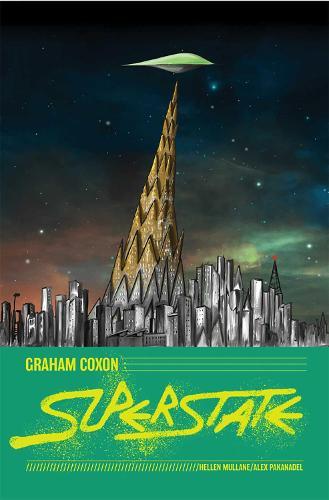
Stanley Donwood, known for creating album artwork for Radiohead and Thom Yorke (Radiohead's frontman), has recently started working with VR. His artwork has been with Radiohead right from the start, starting with the ‘My Iron Lung’ EP. For some making the album artwork and the music are inseparable (Jardin, 2005). Donwood has always greatly experimented with the artwork that is combined with the album, often creating artwork in the same space as the band rehearsing (Richards, 2022). In the early days of both Photoshop and the internet, Donwood was experimenting with the possibilities they held; saying (Donwood, 2019, pg.30) “The first time I made a web page appear on the internet was a moment as beautiful to me as developing a

photograph in a darkroom.” In the early days of the band Donwood and Thom Yorke took over complete control of the website as it was not of interest to the record label (Donwood, 2019, p.65-66). This allowed the band to be experimental, humorous (figure 26) and ahead of the times in this medium. In 2011 for the Radiohead Album ‘King of Limbs’ he created promotional artwork on newspaper type paper (Figure 27) as he was fascinated by the disposable nature of the medium (Williams, 2011). Recently, Donwood was part of revisiting his old early 2000’s artwork (Figure 28) and reinventing it for the digital exhibition 'Kid A Mnesia’ (Figure 29) available via video game consoles such as Playstation (Yorke, Donwood, 2021). The 3D environment is now a new way of viewing the work that was created, when reflecting on the longevity that the artwork has had. Donwood said (Donwood, 2019, p.16) “It's not a scrapbook; it's not a collection of singles - it's a complete entity, the music and the artwork and the blips and the way it was promoted, or not promoted. It was a very cohesive art project”

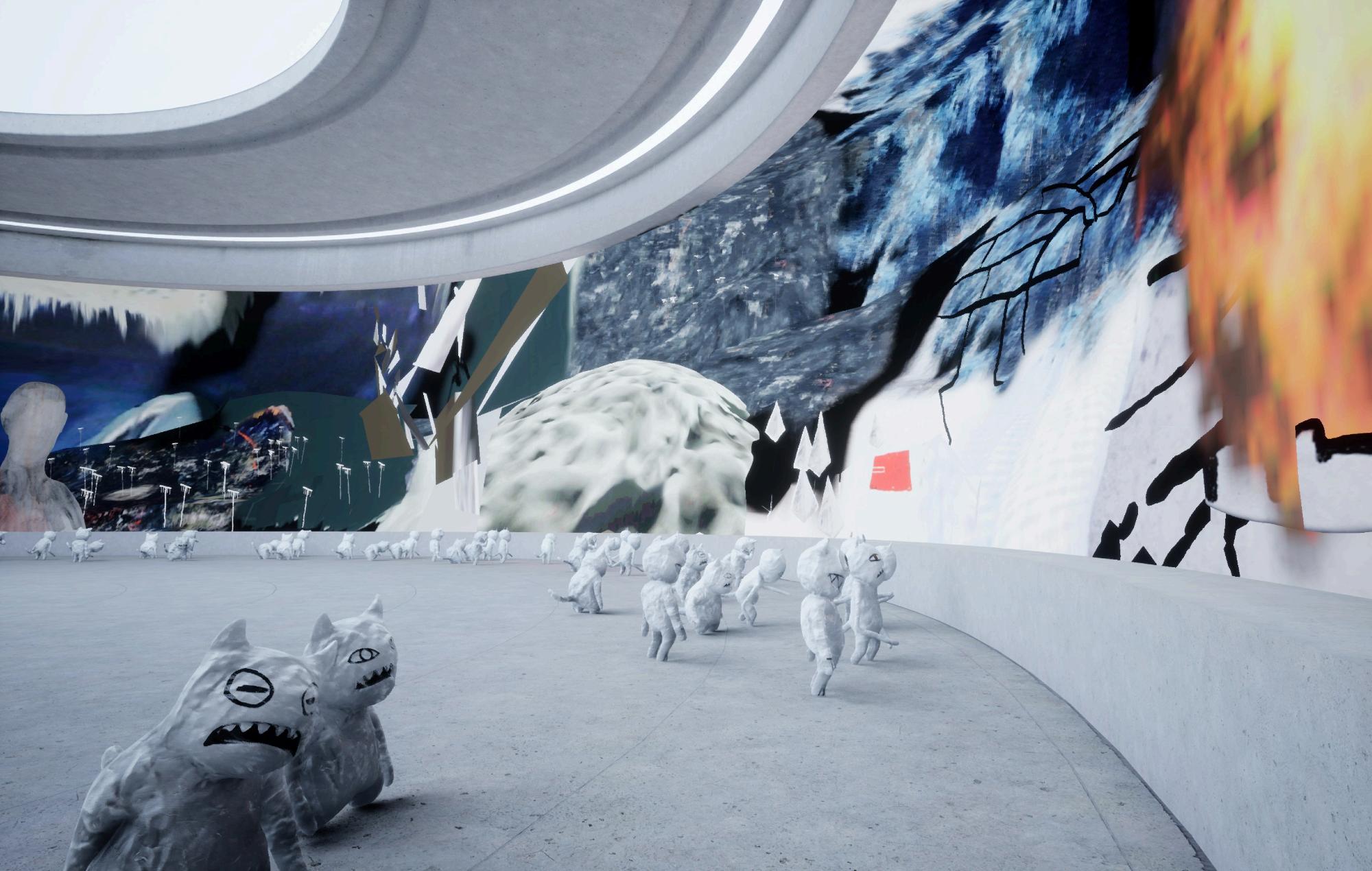


Another way of looking to the future is in looking to the past. The desire to design and create visual content for artists who have passed away is still present, but because the artist themselves cannot feature in the video, the lyric video has grown in popularity (Wong, 2021). These new releases often come about as part of an anniversary to an iconic album. When these projects happen for artists such as The Rolling Stones or George Harrison (Figure 30), it is the desire of the designer to best respect what has come before and make it feel of the time the song originated, (Wong, 2021). This leads to great conflicts between making the lyric video look modern but also accessing the nostalgia that is associated with the original. Lots of these examples use things that were produced by the original artist and incorporate that intelligently into the new works (Wong, 2021). Lyric videos have been growing in popularity for years, this popularity was acknowledged by MTV giving the video format its own category at their awards (O’Keeffe, 2014). The fact that these videos are popular amongst both the old and new artists shows that the realm of promotion does not discriminate with age.
Our current age is often defined by the trend of how we experience music via streaming or a physical product, compared to the genera we listen to (Tariq, 2020). When asked about the future of the music industry Steve Lippert (2022), displayed great confidence in the staying power of physical media saying, “The physical form will stay, forever hopefully!” In regards to promotion he said, “Things may settle pretty much as they are for a while. A few apps will come and go, mutate and improve along the way.” This suggests the belief that trends will rise and fall, no matter how permanent they feel at that time. With the music industry moving at the speed it is and with the constant levels of availability per person increasing, predicting what the future will hold is a harder task than before (Pastukhov, 2022).

Conclusion
This essay has looked at the impact of technology on the design industry over the last 30 years. Ranging from the album art itself and the surrounding promotion. This essay found that the technological developments have caused the campaign to focus less on album covers. This has forced innovation in areas such as motion and social media promotion. However the album cover is a key part of the promotion and has remained so for the last 30 years. The way that this key status of the album cover remains, depends on the design and work around it.
The scale of the artwork has had an impact on the design of album covers but for many graphic artists, this scale change from vinyl to CD then, from that to streaming thumbnails has helped their practice for the better. For others, this size change is making the image less iconic and noticeable. This has seen the fall of once key elements of the album cover, such as typography, which has been greatly repositioned in terms of its necessity. This in many cases does not matter as the campaign surrounding the album cover has become much stronger. Social media and streaming services have created a new medium for promotion and design. Now the album cover is almost a 'proof of concept’ for the full campaign and the album. Motion also has a much larger role in this newer age of advertising
These changes have also greatly impacted the audience and how they respond to the albums being promoted to them. The survey showed that a great level of influence comes from the social media promotion and that people engage with their favourite artist via social media. The research also showed the fact that the album cover was not the overall deciding factor on whether an album is purchased or listened to, but it still has some sway. This online engagement is very much looking to be the future of how artist communicate with their fans, but the album cover still works in many aspects of its core function and is still widely expanded onto merchandise that enables people to buy into the brand of the music they like.
Lastly, the essay also looked at what the future of album artwork promotion could be. This particularly focused on the practitioners who are looking forward in this field, and are regularly pushing into uncharted territory. These ranged from designers like Stanley Donwood and musicians such as Bjork. These people have always pushed the digital methods forward, and now are pioneering new experiences in AR and VR. The nature of nostalgia in the design industry also came into conversation as lots of historic and iconic songs are being re-promoted through new music videos or lyric videos. This greatly helps modernise the past and potentially make those records iconic outside of the initial album artwork that was created at the time of release. Through
all of these new developments that will come and go, the prevailing attitude held by many is that good design will always be good design and the music industry will always have a place for it.
To conclude, the music industry is one that will be forever changing, the trajectory of this is very hard to predict. Innovation and experimentation are at the core of both music and design and often grow in this together. CDs are now in many ways a thing of the past, who is to say it is that long until streaming is replaced by something else. Whatever that may be, new innovative design will be just around the corner.
List of images:
Figure 1: Cunningham, J. (2020) Levellers phoenix logo design displayed on album design for ‘Peace’. [Album Cover] Available at: https://www.levellers.co.uk/products/levellers-peace (Accessed on: 23.10.22)
Figure 2: Reid, J. (1977) Sex Pistols logo. Available at: https://store.sexpistolsofficial.com/*/*/TheOriginal-Recordings-CD/7DGJ0000000 (Accessed on: 16.11.22)
Figure 3: Frame from Subterranean Homesick Blues music video. (1965) From: Subterranean Homesick Blues. Directed by: Pennebaker, D. A. [Music Video Still] Available at: https:// www.google.co.uk/amp/s/faroutmagazine.co.uk/bob-dylan-60-years-new-subterranean-homesickblues-video/%3famp (Accessed on: 23.10.22)
Figure 4: Cullen, M. Frame from ‘The Science of Selling Yourself Short’. (2005) From: The Science of Selling Yourself Short. Directed by: Unknown. [Music Video Still] Available at: https:// m.youtube.com/watch?v=krXG307d4k8 (Accessed on: 23.10.22)
Figure 5: Carlson, E. T. (2016) Bon Iver artwork for album ’22, a Million.’ [Album Artwork] Available at: https://walkerart.org/magazine/designing-bon-iver-22-a-million-album-art-eric-timothy-carlson (Accessed on: 23.10.22)
Figure 6: Frame from ‘00000 Million’ Bon Iver lyric video. (2016) From: 00000 Million. Directed by: Anderson, A. Carlson, E. T. [Music Video Still] Available at: https://www.youtube.com/watch? v=0FqojM1TYqo (Accessed on: 16.11.22)
Figure 7: Spotify. (2020) Spotify Canvas Features. [Feature promotion] Available at: https:// canvas.spotify.com/en-us (Accessed on: 23.10.22)
Figure 8: Barnbrook, J. (2013) David Bowie ‘The Next Day’ album artwork. [Album Artwork] Available at: https://www.ft.com/content/a9319d96-825d-11e2-843e-00144feabdc0 (Accessed on: 16.11.22)
Figure 9: Anon (2013) Meme inspired by David Bowie ‘The Next Day’ album artwork. Available at: https://barnbrook.net/work/david-bowie-the-next-day-2/
Figure 10: Anon (2022) Just Mustard album with additional features such as gatefold, posters and a lyric book. [Album Artwork] Available at: https://spindizzyrecords.com/products/just-mustardheart-under-deluxe-2lp-w-art-print-lyric-book-gatefold-black-vinyl-nov-4 (Accessed on: 23.10.22)
Figure 11: Anon (2021) Types of Spotify playlists. [Feature promotion] Available at: https:// www.aestheticroomcore.com/blogs/aesthetic-room-blog/top-spotify-aesthetic-playlists-for-yourroom (Accessed on: 23.10.22)
Figure 12: Jackson, B (2022) Song ‘Leader of the Pack' by Wunderhorse shared on instagram stories. [Screenshot] In possession of Jackson, B
Figure 13: Jackson, B. (2022) Chart showing answers for survey question ‘do your social media friends and connections influence the music you listen to?’ [Graph from survey] In possession of Jackson, B. (Appendix 4)
Figure 14: Jackson, B. (2022) Chart showing answers for survey question ‘Do you follow your favourite musical artists on a social media platform?’ [Graph from survey] In possession of Jackson, B. (Appendix 4)
Figure 15: Maitland, M (2006) Stickers to customise Beck ‘The Informer’ album cover. [Album Artwork] Available at: https://bigactive.com/music-art-direction-design/music/beck-information/ (Accessed on: 16.11.22)
Figure 16: (2022) Florence + the Machine Pre-Raphaelite tapestries album promotion. [Artwork] Available at: https://www.creativereview.co.uk/spotify-tapestries-florence-the-machine-albumlaunch/ (Accessed on: 23.10.22)
Figure 17: Jackson, B. (2022) Chart showing answers for survey question ‘How much attention do you pay to album artwork?’ [Graph from survey] In possession of Jackson, B. (Appendix 4)
Figure 18: Jackson, B. (2022) Chart showing answers for survey question ‘How likely are you to watch music videos?’ [Graph from survey] In possession of Jackson, B. (Appendix 4)
Figure 19: Jackson, B. (2022) Chart showing answers for survey question ‘How much does album artwork influence your decision to listen to music?’ [Graph from survey] In possession of Jackson, B. (Appendix 4)
Figure 20: Jackson, B. (2022) Chart showing answers for survey question ‘How much does album artwork influence your decision to purchase music?’ [Graph from survey] In possession of Jackson, B. (Appendix 4)
Figure 21: Frame from Youtube upload of Modern Man Lyric Video (2020) From: Modern Man Directed by: unknown. [Music video still] Available from: https://www.youtube.com/watch?
v=P_0PhRlfjas (Accessed on: 16.11.22)
Figure 22: Creative Review (2020) Frame from video displaying Instagram AR feature on HAIM album cover. [Video still] Available at: https://www.creativereview.co.uk/great-work-haimsaugmented-reality-album-cover/ (Accessed on: 16.11.22)
Figure 23: Frame from Bjork Immersive Music video (2019) From: Vulnicura Virtual Reality Album Directed by: Merry, J. [Music video still] Available from: https://www.roadtovr.com/bjork-vulnicuravirtual-reality-album-music-video/amp/ (Accessed on: 23.10.22)
Figure 24: Anon (2010) MCR in Concept Album Characters (the killjoys) Dress Up. [Photograph] Available at: https://www.afterglowatx.com/blog/2020/11/22/album-anniversaries-10-years-ofconfronting-conformity-with-my-chemical-romances-danger-days (Accessed on: 23.10.22)
Figure 25: Coxon, G. (2020) Superstate Comic Book Cover. [Book Cover] Available at: https:// www.waterstones.com/book/superstate/graham-coxon/hellen-mullane/9781940878553 (Accessed on: 23.10.22)
Figure 26: (1997) Radiohead Website Home Page 1997. [Website] Available at: https:// pitchfork.com/features/article/9890-internet-explorers-the-curious-case-of-radioheads-onlinefandom/ (Accessed on: 12.11.22)
Figure 27: Donwood, S. (2011) Newspaper Edition of The King of Limbs. [Album Artwork] Available at: http://tbpdesign.blogspot.com/2011/04/king-of-limbs-newspaper-edition.html?m=1 (Accessed on: 23.10.22)
Figure 28: Donwood, S. (2001) Kid A album artwork. [Album Artwork] Available at: https:// elephant.art/stanley-donwoods-chilling-prescient-artwork-radioheads-kid/ (Accessed on: 23.10.22)
Figure 29: Donwood, S. (2021) Frame from Epic Games KID A MNESIA Exhibition. [Video Game Exhibition] Available at: https://www.nme.com/features/gaming-features/radioheads-kid-a-mnesia-
exhibition-is-as-untraditional-warped-and-magical-as-the-band-itself-3098521 (Accessed on: 23.10.22)
Figure 30: Frame from new George Harrison lyric video (2021) From: George Harrison - Cosmic Empire (Day 2 Demo / Take 1 / Lyric Video). Directed by: Mahan, K. [Music video still] Available from: https://www.nme.com/features/gaming-features/radioheads-kid-a-mnesia-exhibition-is-asuntraditional-warped-and-magical-as-the-band-itself-3098521 (Accessed on: 23.10.22)
Interviews:
Blake, A. (2022) email to Ben Jackson, 17 October (Appendix 1)
Cunningham, J. (2022) email to Ben Jackson, 19 September (Appendix 2)
Lippert, S. (2022) email to Ben Jackson, 30 August (Appendix 3)
Bibliography:
Aswad, J. (2022). Vinyl Sales Soared 22% in First Half of 2022, Per RIAA Mid-Year Report. [Online] Variety. Available at: https://variety.com/2022/music/news/vinyl-sales-soared-2022-riaamid-year-report-1235379361/ [Accessed 10/11/2022]
Besseny, A. (2019) “Lost in Spotify: Folksonomy and wayfinding functions in Spotify’s interface and companion apps,” Popular Communication, 18(1), pp. 1–17. Available at: https:// www.tandfonline.com/doi/epub/10.1080/15405702.2019.1701674?needAccess=true [Accessed 6/9/2022]
Bonifacic, I. (2020). Spotify promo cards are a more visual way to share music and podcasts [Online]. engadget. Available at: https://www.engadget.com/spotify-promo-cards-182849288.html [Accessed 7/9/2022].
Byrne, E. (2016). Designing Bon Iver's 22, a Million: An Interview with Eric Timothy Carlson. [Online]. Walker. Available at: https://walkerart.org/magazine/designing-bon-iver-22-a-millionalbum-art-eric-timothy-carlson [Accessed 7/9/2022]
Cochran, G. (2019). Visuals in Music Promotion: Developing an Effective Visual Marketing Campaign Within the Musical Brand of the Bluegrass Genre. MFA Thesis. Available at: https:// digitalcommons.liberty.edu/cgi/viewcontent.cgi?article=1563&context=masters [accessed on 12.11.22]
Cole, S. (2019). The impact of technology and social media on the music industry. [Online]. Econsultancy. Available at: https://econsultancy.com/the-impact-of-technology-and-social-mediaon-the-music-industry/ [Accessed 7/9/2022].
Cook, K. (2013). Music Industry Market Research,The Effect of Cover Artwork on the Music Industry. Thesis. College of Liberal Arts California Polytechnic State University. Available at: https:// digitalcommons.calpoly.edu/cgi/viewcontent.cgi?
referer=&httpsredir=1&article=1108&context=grcsp [Accessed 4/9/2022]
Creative Review. (2020) Great Work: Haim’s augmented reality album cover. [Online]. Creative Review. Available at: https://www.creativereview.co.uk/great-work-haims-augmented-reality-albumcover/ [Accessed 7/9/2022]
De Ville, N. (2003) Album : style and image in sleeve design. London: Mitchell Beazley
Decesare, M. & Wang, H. (2015) The Use of AR and VR to Change the Future of Music. [Online] Wharton Neuroscience Initiative. Available at: https://neuro.wharton.upenn.edu/community/ winss_scholar_article4/ [Accessed 10/11/2022].
Donwood, S. & Yorke, T. (2021) Kid A Mnesia: A Book of Radiohead Artwork. London: Canongate Books
Donwood, S. (2019) Stanley Donwood: There Will Be No Quiet. London: Thames and Hudson Ltd Faith, B. (2007) Listen to the Music: A Multimodal View of Albums and Their Covers. Grassroots Writing Research. Available from: suwriting.com/wp-content/uploads/2021/04/Borland-Listen-tothe-Music-A-Multimodal-View-of-Albums-and-Their-Covers.pdf [accessed on 12.11.22]
Graff, G. (2018). Old Format, New Records. Billboard. [Online]. Available at https:// www.proquest.com/docview/2120671952/fulltextPDF/47ECB5844A664678PQ/1?accountid=10749 [Accessed 7/9/2022].
Iqbal, M. (2022) Spotify Revenue and Usage Statistics (2022). [Online]. Businessofapps. Available at: https://www.businessofapps.com/data/spotify-statistics/ [Accessed 10/11/2022]
Jardin, X. (2005) "Radiohead artist" Stanley Donwood's prints online. [Online]. boingboing Available at: https://boingboing.net/2005/08/16/radiohead-artist-sta.html [Accessed 18/10/2022].
Karakuyu, H C. (2016). THE MUSIC ALBUM IN THE DIGITAL ERA: IS IT REALLY DEAD. Erasmus University Rotterdam. Master’s Thesis. Available at: https://www.academia.edu/ 30229853/THE_MUSIC_ALBUM_IN_THE_DIGITAL_ERA_IS_IT_REALLY_DEAD [Accessed 6/9/2022]
Klanten, R. & Hellige, H. (2007) Supersonic : visuals for music . Berlin: Gestalten Verlag
Le, V. (2020). Visual Metaphors on Album Covers: An Analysis into Graphic Design’s Effectiveness at Conveying Music Genres. Thesis. Oregon State University. Available at: Visual Metaphors on Album Covers: An Analysis into Graphic ...https://ir.library.oregonstate.edu › d [Accessed 4/9/2022].
Long, M. (2020). Lockdown spurs vinyl design boom [Online]. Design Week. Available at: https:// www.designweeLk.co.uk/issues/16-22-november-2020/post-digital-vinyl/ [Accessed 7/9/2022]
McKinney, K. (2015). Technology is changing the way album covers are designed. [Online] Splinter News. Available at: https://splinternews.com/technology-is-changing-the-way-album-covers-aredesigne-1793848662 [Accessed 10/11/2022].
Medel, I L. (2014). Death and resurrection of the album cover. Azusa Pacific University. Available at: https://www.researchgate.net/publication/ 260424430_Death_and_resurrection_of_the_album_cover [Accessed 6/9/2022]
Milton, J. (2017) Streaming overtakes downloads, CDs and vinyl sales in the U.S. [Online] NME. Available at: https://www.nme.com/news/music/streaming-overtakes-downloads-cds-vinyl-salesus-2030623 [Accessed 10/11/2022]
Ore, A. (2013). Did Digital Mark The Death Of Album Artwork?. [Online]. Tone Deaf. Available at: https://tonedeaf.thebrag.com/did-digital-mark-the-death-of-album-artwork/ [Accessed 4/10/2022]
O’Keeffe, K. (2014) The Future Of Music Streaming And Marketing. [Online]. The Atlantic. Available at: https://www.theatlantic.com/culture/archive/2014/08/where-did-all-these-lyric-videos-come-fromand-why-are-we-giving-them-awards/376084/ [Accessed 18/10/2022]
Pastukhov, D. (2022) The Future Of Music Streaming And Marketing. [Online]. Soundcharts. Available at: https://soundcharts.com/blog/music-industry-trends [Accessed 18/10/2022].
Richards, D. (2022) Stanley Donwood in conversation with Dan Richards. [podcast] Available at: https://on.soundcloud.com/uZcSRL1Tf2zHZoi27 [Accessed 15th September 2022]
Robley, C. (2022) How to Use Spotify Canvas for Cool Video Features. [Online] DIY Musician. Available at: https://diymusician.cdbaby.com/music-promotion/spotify-canvas/ [Accessed 10/11/2022].
Robson, D. (2016). THE EVOLUTION OF ALBUM DESIGN. [Online]. Frukt. Available at: https:// wearefrukt.com/insights/the-evolution-of-album-design [Accessed 7/9/2022]
Shaughnessy, A. (1999) Sampler : contemporary music graphics. London: Laurence King.
Shaughnessy, M. (2007). Are JPEGs the New Album Covers? [Online]. Design Observer. Available at: https://designobserver.com/feature/are-jpegs-the-new-album-covers/5417 [Accessed 7/9/2022]
Siqueira, M. (2018). Brief History Of Music Video. [Online]. Matheus Siqueira. Available at: https:// matheussiqueira.com/a-brief-history-of-music-video/ [Accessed 19/9/2022].
Skelton, E. (2017). Why Cover Art Is More Important Than Ever. [Online]. Complex. Available at: https://www.complex.com/pigeons-and-planes/2017/04/should-we-still-care-about-cover-art [Accessed 7/9/2022]
Sparrow, J. (2021) Spotify launches songwriter-focussed playlists and Billie Eilish in-platform artist hub. [Online] Music Ally. Available at: https://musically.com/2021/08/02/spotify-launches-songwriterfocussed-playlists-and-billie-eilish-in-platform-artist-hub/ [Accessed 10/11/2022].
Sánchez-Moreno, D. Zheng, Y. and Moreno-García, M.N. (2020) Time-Aware Music Recommender Systems: Modeling the Evolution of Implicit User Preferences and User Listening Habits in A Collaborative Filtering Approach. Applied Sciences. vol. 10 no.15 pp. 5324. doi:10.3390/ app10155324. Available at: https://www.researchgate.net/publication/343903594_Time-
Aware_Music_Recommender_Systems_Modeling_the_Evolution_of_Implicit_User_Preferences_a nd_User_Listening_Habits_in_A_Collaborative_Filtering_Approach [accessed on 12.11.22]
Swarbrick, D. Seibt, B. Grinspun, N. Vuoskoski, J K. (2021) Corona Concerts: The Effect of Virtual Concert Characteristics on Social Connection and Kama Muta. Frontiers in Psychology. 12. doi:10.3389/fpsyg.2021.648448. Available at: https://www.researchgate.net/publication/ 343903594_Time-
Aware_Music_Recommender_Systems_Modeling_the_Evolution_of_Implicit_User_Preferences_a nd_User_Listening_Habits_in_A_Collaborative_Filtering_Approach [accessed on 12.11.22]
Tariq, H. (2020) The Future Of Music Streaming And Marketing. [Online]. Forbes. Available at: https://www.forbes.com/sites/forbescommunicationscouncil/2020/08/06/the-future-of-musicstreaming-and-marketing/?sh=21d48d777daf [Accessed 18/10/2022].
Taylor T. (2021) Far Out Meets: Graham Coxon on his new album 'Superstate'. [Online]. Far Out. Available at: https://faroutmagazine.co.uk/far-out-meets-graham-coxon-on-his-new-albumsuperstate/ [Accessed 15/10/2022]
Thomas, S. (2013) “Artists’ Recordworks in the Early Twenty-First Century”, Art Documentation: Journal of the Art Libraries Society of North America, vol. 32, no. 2, pp. 253-273. Available at:
https://www.academia.edu/4445486/_Artists_Recordworks_in_the_Early_Twenty-First_Century_ [Accessed 6/9/2022]
Vanderbilt, T. (2005). Rise and Fall of Rock and Roll Graphic Design. [Online]. Design Observer. Available at: https://designobserver.com/feature/rise-and-fall-of-rock-and-roll-graphic-design/3037 [Accessed 4/9/2022]
Webb, C. (2013) EXCLUSIVE: Gerard Way On 'True Lives Of The Fabulous Killjoys' + New MCR Video! [Online] MTV. Available at: https://www.mtv.com/news/uxm794/my-chemical-romance-truelives-of-the-fabulous-killjoys-interview-video [Accessed 10/11/2022].
Williams, E. (2010) Arcade Fire’s Synchronised Artwork [Online]. Creative Review. Available at: https://www.creativereview.co.uk/arcade-fires-synchronised-artwork/ [Accessed 5/9/2022]
Williams, E. (2011) The King of Limbs Newspaper Album by Stanley Donwood. [Online]. Creative Review. Available at: https://www.creativereview.co.uk/the-king-of-limbs-newspaper-album-bystanley-donwood/ [Accessed 5/09/2022].
Williams, E. (2016). BJÖRK’S VIRTUAL WORLD [Online]. Creative Review. Available at: https:// www.creativereview.co.uk/bjork-digital/ [Accessed 5/9/2022]
Williams, E. (2018). New platform Lava brings music to life as you listen [Online]. Creative Review. Available at: https://www.creativereview.co.uk/new-platform-lava-brings-music-to-life-as-you-listen/ [Accessed 5/9/2022]
Williams, E. (2021) GRAHAM COXON ON HIS DYSTOPIAN AV PROJECT SUPERSTATE [Online]. Creative Review. Available at: https://www.creativereview.co.uk/graham-coxon-superstate/ [Accessed 15/10/2022].
Williams, E. (2022). Spotify creates a series of tapestries for Florence + The Machine album launch [Online]. Creative Review. Available at: https://www.creativereview.co.uk/spotify-tapestriesflorence-the-machine-album-launch/ [Accessed 5/9/2022]
Wong, H. (2020). Spotify’s Canvas platform lets designers create mini music videos. [Online]. Design Week. Available at: https://www.designweek.co.uk/issues/16-22-november-2020/spotifycanvas-design/ [Accessed 7/9/2022]
Wong, H. (2021) Why lyric videos are having a design renaissance. [Online]. Design Week. Available at: https://www.designweek.co.uk/issues/9-15-august-2021/lyric-video-design/ [Accessed 7/9/2022].
Woolman, M. & Bellantoni, J. (2004) Motion design : moving graphics for television, music video, cinema, and digital interfaces. Mies ;: RotoVision
Appendix 1. Adam Blake Email Interview Answers
1. Has the shift from music being consumed primarily as a physical product to streaming affected the way you approach designing album artwork?
On a conceptual level no, not at all. Conceptually we're always trying to deeply connect the visual piece to the music in order to make something beautiful and interesting that stands out. Technically though, some things have shifted a little. Artwork is smaller than it's ever been on some screens so knowing the concept and layout will read at smaller scales is a plus, though not always a dealbreaker. Also, now that both the artist name and album/song title is almost always written directly below the artwork, there's certainly less of a need to put the artist's name or title on the actual artwork. Even as someone who loves type, I've always been a fan of albums that do this (see: Dark Side of the Moon, Unknown Pleasures, Led Zepplin Presence, etc). For me, that restraint can really heighten the magic and suprise of certain albums especially if the image can really hold it’s own.
2. Do features such as augmented reality or animated reels for Spotify interest you as accessories to album artwork?
Anytime we can bring something visual to the table it feels interesting and exciting no matter the outlet – be it this, videos, merch, etc. I would love to see animated reels utilized in a fresher way though. Right now it typically feels a bit disposable or just a way to repurpose another piece (like a music video, or animated album artwork). Part of me gets that, but I also would want to try to turn it on its head, lean into the constraints, and use it in a way nobody has tried before so the audience might look forward to it as much as the main album artwork.
3. What do you think is the future for album artwork and promotion?
As far as artwork, I think there will always be a visual representation of the music so I don’t see that going anywhere. Though, I could see the form it takes being quite a bit different – videos, holograms, emersive experiences (physical and VR), etc. Promotion though could be wildly different – right now we mainly have social media and streaming services, but the emergence of the metaverse and augmented reality could really change the game. Whatever comes next though
will be difficult to predict, and the industry will need to adapt, but I think visuals and artwork of some kind will always be needed.
4. Has the awareness of album promotion from the musical artist or band changed with the rise of social media campaigns? And does this affect your design process?
I actually don’t think awareness of album promotion has changed – whether it was radio and records stores back in the day or social media and streaming now I think most artists are aware of and concerned about how they’re work is being promoted and received. The biggest difference now though is artists can do it all themselves and they immediately have a metric for it all. In any case, this awareness does not really affect our design process at all. As artists and designers we always have eye to trends or other stuff out there (good or bad), but for us we're are always working outside of those things, trying to create something specific and special for the project
5. Out of the various outputs for music, CD, Vinyl and streaming which do you most prioritise and do you feel pressured to focus on a certain aspect in particular?
Personally I prioritise vinyl. Records are how I got into design so they are immediately where I go when envisioning the artwork coming to life. Also, I see it more one-to-one with digital artwork than I do CDs for some reason. I guess since the streaming era started they just hold the same visual weight or importance to me over CDs. I typically don’t feel pressured to focus on any aspect, but we’re always trying to to strive to make magic with the cover image so that is always the priority. The one exception could be if the artist’s image is on the cover – then beyond the image as a whole, there’s certainly an strong eye to making sure they look great as well.




